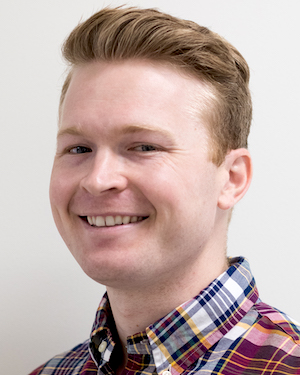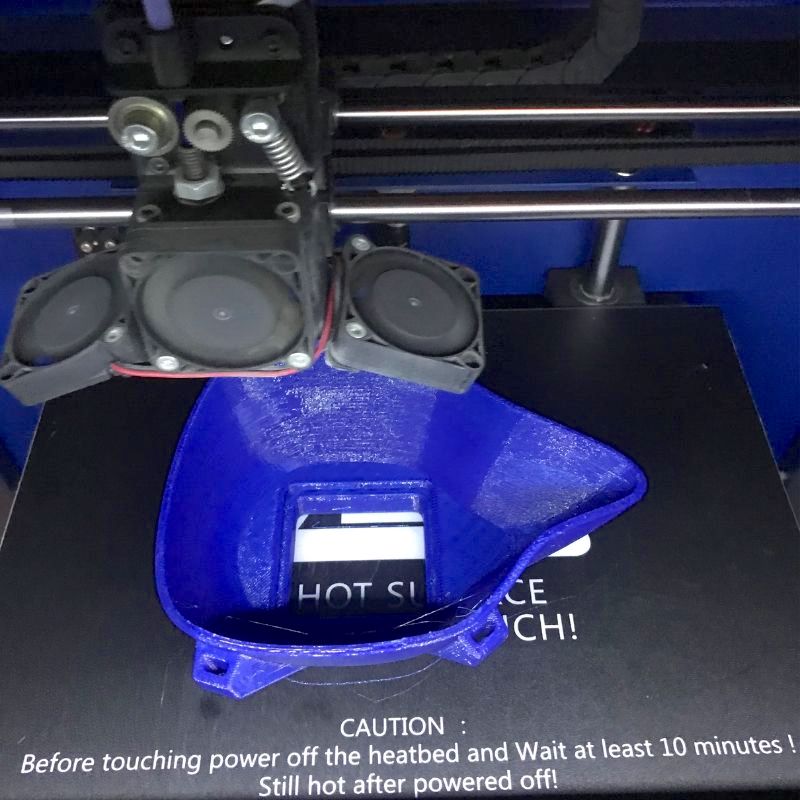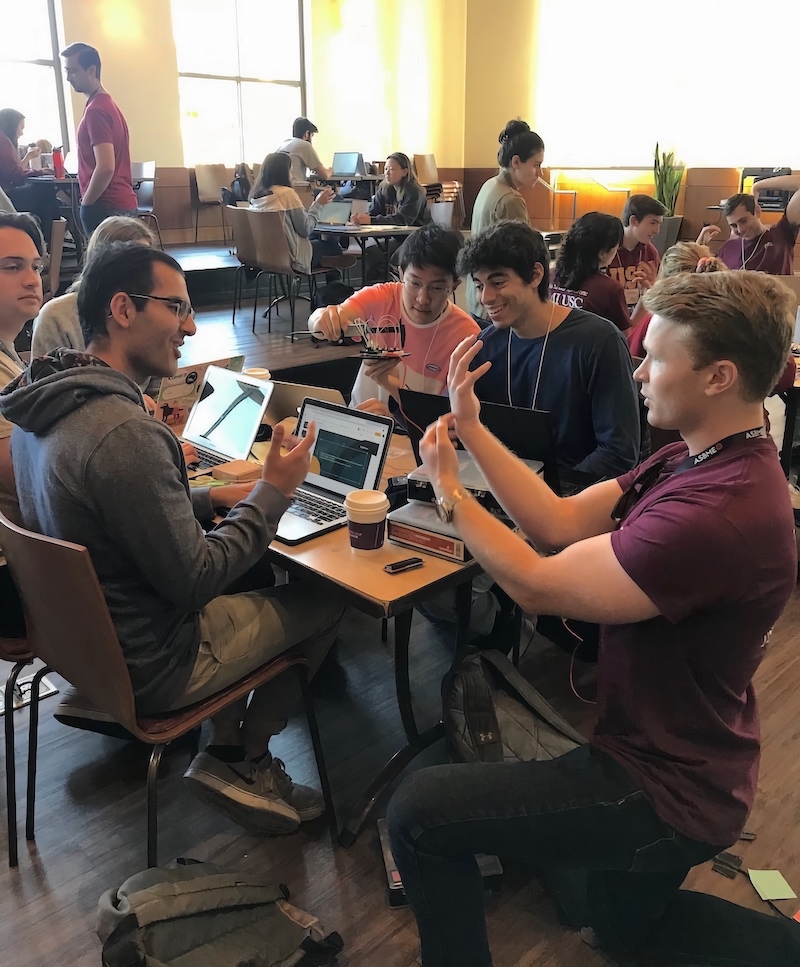Student Blog
Kevin

Advice for Incoming Master’s Students ⟩
April 28, 2020, by Kevin
Congratulations, you are officially a Trojan or Double Trojan! You have just made one of the best decisions of your life to pursue a master’s degree in occupational therapy from the USC Chan Division! I have no regrets making that same decision two years ago and I cannot wait to continue with USC in the OTD program. This is my last blog as a student ambassador, and I wanted to end this time by passing on some of the lessons I learned during my time in the master’s program. Here are my top three pieces of advice:
Make Time for Fun, Friends, and Family
While the master’s program is not simple walk in the park, it should not feel like a walk through the haunted woods. You are a dedicated student and you deserve to take a breath and relax from time-to-time. Make it a priority to have at least one small, fun or social activity to look forward to each day. Once I start incorporating leisure and family time into my daily schedule, I found myself with little stress and my attention to coursework improved.
Reach Out to USC Faculty, Staff, and Students
The Trojan Family is not just a saying! The faculty, staff, and students at USC will be there for you whenever you need them, all you need to do is reach out. Even if it is not related to the program, there is always someone willing to provide you help or guidance for anything you may need. Specifically, the faculty and staff in the Chan Division have been incredibly supportive and approachable throughout my master’s program. Even now during this time at home, USC faculty members are willing to meet with students individually to discuss their goals and wellbeing. Just as I recommend reaching out to your friends and family, do not forget to make time for your Trojan Family!
Say Yes and Take Advantage of Opportunities in the Master’s Program
The Chan Division will introduce you to many new and exciting opportunities in the field of occupational therapy and beyond. From guest lectures, to innovation bootcamps, to volunteer events, find what interest you and utilize the opportunities the Chan Division has to offer. Additionally, when an opportunity comes along that you were not expecting, adventure out and say “yes”! You may discover a new practice field, a new interest, or a new friend.
These are my top three pieces of advice coming into this program. While studying is also important, I feel it was these three things that made my experience in the master’s program as amazing as it was. After building my foundation of support and taking new opportunities, I found that the studying came easy and my coursework had more meaning. Congratulations again on embarking on what will likely be one of the most transformative and positive experiences of your life! Fight on!
⋯

3D-Printed Masks for Healthcare Professionals ⟩
April 9, 2020, by Kevin
As news of personal protective equipment (PPE) shortages continue to spread in coronavirus hotspot areas, grassroots movements of makers have sprung up all over the country. Teams of people are collaborating virtually to help mitigate the shortage in PPE for healthcare professionals/frontline workers. Additionally, as recent recommendations have been put in place for citizens to wear some type of face covering when out in the community, people are getting creative with new ways to create face coverings. For instance, within the Chan Division community the USC Occupational Therapy and Science Council (OTSC) arranged a crafting night for Chan students and faculty to virtually socialize and create face covering from everyday materials that people can find in their homes! Additionally, efforts have been made by the larger USC community to combat the supply shortage.
Within the USC community and Los Angeles Area, a group of currently over 130 members have assembled virtually to create PPE. Last week, I joined this effort after speaking to USC Chan faculty member Sook-Lei Liew PhD, OTR/L, who is currently 3D-printing masks and face shields. The community is made up of sewers, makers, prop artists, and many other creative and talented people who have the common goal to support the people who are risking their own health to save the lives of others. If you would like to know more about this effort to create PPE, you can read more about one of the communities’ founders and organizers, Darryl Hwang, PhD in HSC News. As a member of this community, I am using my home 3D-printers to print masks and eventually face shields. These masks and face shields will be used in the event that PPE shortages occur in the local healthcare facilities. While my involvement is small, with the help of many people, we can help make a difference in our community.

3D-printing the open-source mask design

1st batch of masks finished!

Trying on my test print of the mask
Within all the hardship this pandemic brings, communities of people working together remind me that love, kindness, and cooperation make everything a little better. I’m proud to be involved in such a community at USC. Fight On!
⋯

Ergo Externship ⟩
March 26, 2020, by Kevin
Despite the COVID-19 pandemic escalating each day, I had an unforgettable externship experience that kept me uplifted during these difficult times. My original externship plan was to attend an ergonomic certification course in-person and shadow Marissa Marchioni OTD, OTR/L, CEAS at the USC Occupational Therapy Faculty Practice. As the situation escalated, I chose to do most of my externship remotely from home. Ultimately, I decided on three main objectives for the externship:
1. Become a Certified Ergonomics Assessment Specialist
To kickoff this externship experience, I enrolled in the online version of the CEAS course to increase my understanding of ergonomics and further my professional development. The CEAS taught me the basics of evaluating ergonomic risk factors and areas for improvement in a wide variety of workplace settings including offices, hospitals, and manufacturing plants. While much of the information from the course had been covered in the ergonomic elective, my grasp of ergonomics was strengthened, and I was able to apply what I learned to the shadowing experiences with Dr. Marchioni and in the design of my ergonomic device. Additionally, at the end of the course, I received an official certification to assess workplaces for ergonomics which I hope will be a valuable asset in my future career.
2. Shadow Ergonomic Assessments with Marissa Marchioni OTD, OTR/L, CEAS
Before the “Stay at Home” order was put into action, I had the opportunity to shadow several ergonomic assessments with Dr. Marchioni. This was an amazing experience because I was able to see everything I had learned from the CEAS course in real world practice from the lens of an occupational therapist. Dr. Marchioni skillfully used her knowledge of ergonomics, activity analysis, and psychosocial factors to deliver comprehensive ergonomic assessments that were tailored to each person in their specific work setting. I was especially amazed at Dr. Marchioni’s ability to impart her own leadership skills on her clients to create “Ergo Leaders” in the workplaces she assessed. An “Ergo Leader” is a person in the workplace who advocates for positive ergonomic changes such as adjusting the lighting in the space or leading periodic stretch breaks. After observing several assessments, Dr. Marchioni gave me the opportunity to assist on an assessment! While I was nervous to jump in so quickly, I took this offer as a leadership opportunity to put my ergonomic education to practice. As we started our assessment, I was pleasantly surprised to see how much I had learned over a short period of time and with Dr. Marchioni’s support the assessment went well!
3. Designing and Prototyping a New Ergonomic Device
One of the main goals of my externship was to bring together all the education and shadowing experience to design a new ergonomic device. After over 100 hours of 3D design, prototyping, and feedback sessions with Dr. Marchioni, my final prototype is finished! This device will help people to be comfortable on the go and in shared workspaces. While, I cannot give away the details as I am in the process of obtaining a patent, I will be presenting the device during the Mark and Semira Moshayedi Innovation Competition that is scheduled to be held in April!
⋯

ASBME Makeathon: USC interdisciplinary collaboration ⟩
February 13, 2020, by Kevin
This past weekend, I had the opportunity to attend the Associated Students of Biomedical Engineering (ASBME) Makeathon event as an occupational therapy mentor. The Makeathon is an energy-charge 30 hour hackathon event in which 12 teams compete to develop and prototype a medical device for a selected real-world population. Using a combination of programing, CAD design, and access to the USC fabrication lab, including the 3D printers, each team rapidly develops an innovative medical or therapeutic technology. A Makeathon or hackathon challenges teams to produce months worth of work in just several days, in addition to having the material constraint of using only the materials provided by ASBME. While this event is primarily for students in the USC Viterbi Biomedical Engineering program, the organizers took an interdisciplinary approach by incorporating mentors from the master’s and doctorate programs of the Chan Division of Occupational Science and Occupational Therapy and the Division of Biokinesiology and Physical Therapy.
This year, the teams were challenged to develop a rehabilitation device that promoted or enhanced physical therapy activity in a nonclinical setting for persons who are experiencing hand or wrist dysfunction post-stroke. Additionally, the device had to be intuitive and address one aspect of motor control including strength, dexterity, and joint extension. Due to my background in 3D modeling and education in occupational therapy, I jumped on the opportunity to take part in the Makeathon as a mentor for the teams.
From the perspective of occupational therapy, the OT students were able to provide valuable advice and suggestions to each team considering person, environment, and occupational of the potential user. During my mentorship time, I performed role plays to help the teams imagine the device in everyday use, provided anatomical explanations pertaining to post-stroke hand and wrist considerations, and advised on design aspects. The undergraduate biomedical engineering students were incredible! I’ve never seen such fast CAD design or Arduino programming. While the students were working furiously to produce their device, they took time to seek out the mentorship of the OT and PT students, which helped the teams understand the rehabilitation applications of their designs. Everything from electronic glove games to dexterity puzzles were made during the course of the competition.

Explaining the extensor anatomy of the wrist and hand during mentorship.
Overall, it was amazing to see biomedical engineering, physical therapy, and occupational therapy students collaborating effectively to inspire truly creative innovation. Attending this event was a subtle reminder to the amazing minds and talent of the students at USC!
⋯

Thank you occupational therapy for . . . ⟩
January 28, 2020, by Kevin
I’ve loved every class and experience here at USC in the Entry-Level Master’s Program! Not only have I grown as a profession and student, but I have grown greatly as a person from my time in this occupational therapy program. So to show my gratitude to this wonderful profession, I would like to say thank you occupational therapy for . . .
Showing me the importance and meaning behind the occupations in my life. From school, to family, to leisure, I learned the value that each occupation holds in my life and how to balance my daily schedule so that I can spend more time doing the occupations I love.
Teaching me to be mindful. The concepts of mindfulness were covered in several courses throughout the program and I have adopted many of the mindfulness strategies into my life such as deep breathing, progressive muscle relaxation, and most importantly being present in the moment. Mindfulness has allowed me to connect with clients, friends, and family on a deeper level than I had in the past and I will always be grateful for this.
Giving me the strength and knowledge to pick myself up when I feel stressed or down. Through the mental health immersion and wellness courses, I gained valuable insight into the impact occupation has on my mood and stress. By keeping in touch with my emotions and stress, I have been able to make small changes to the occupations in my life to improve my wellbeing. For example, after performing a self-assessment called the Occupational Questionnaire, I realized that I was no longer exercising which was an occupation that always helps me reduce stress. With this information, I was able to reschedule my days to allow for time to exercise and quickly regained the physical and emotion benefits that come along with physical activity.
Improving my leadership and advocacy abilities. Both in the program and in my role as a Student Ambassador, I have had the privilege to step into many leadership roles and promote the profession of occupational therapy.
While I only named a few of the things I am grateful for, there are numerous ways occupational therapy has improved my life. If you have an interest in occupational therapy . . . know that you have discovered a gem of a profession that will give back as much as you put in!
⋯





